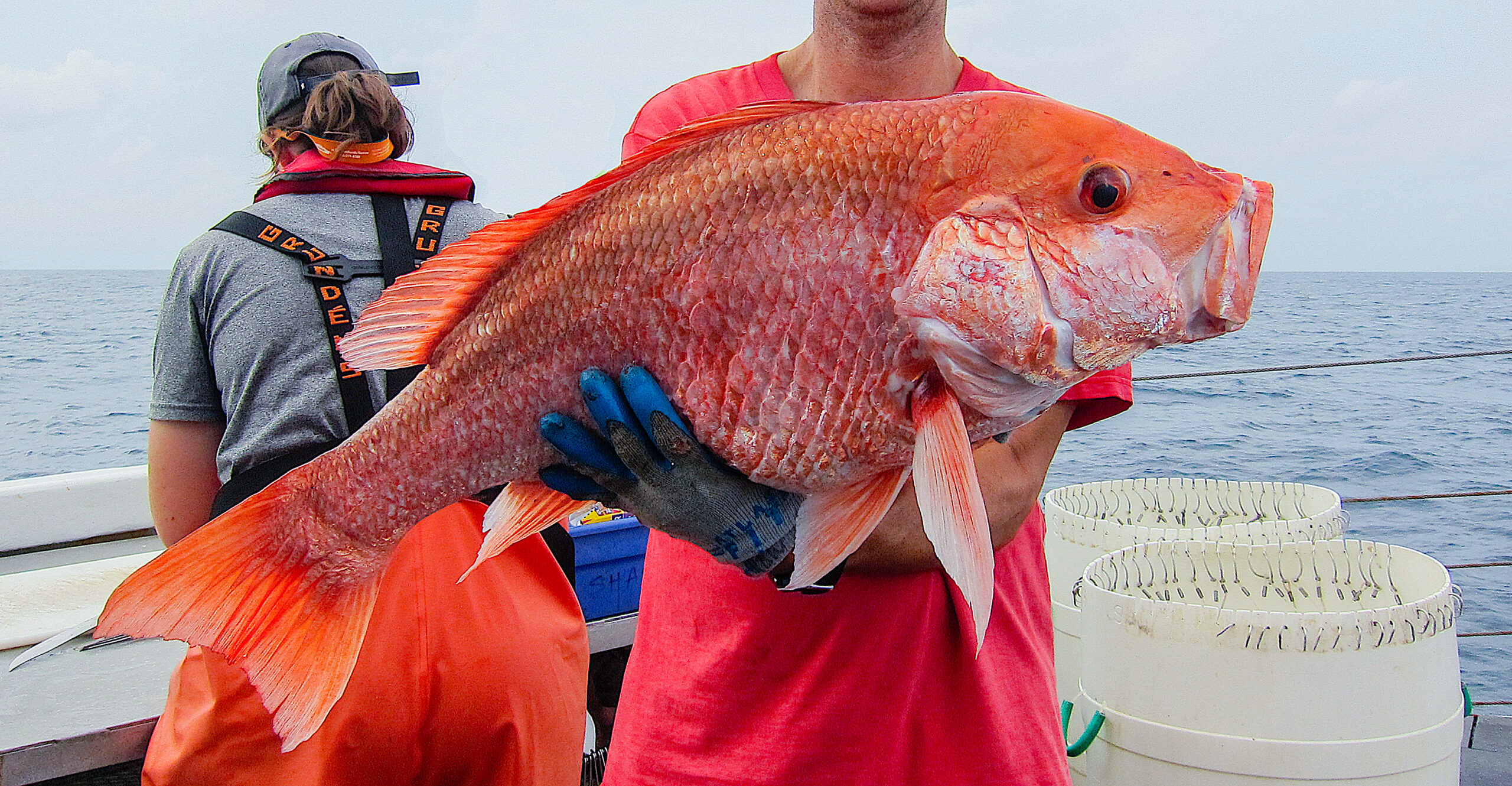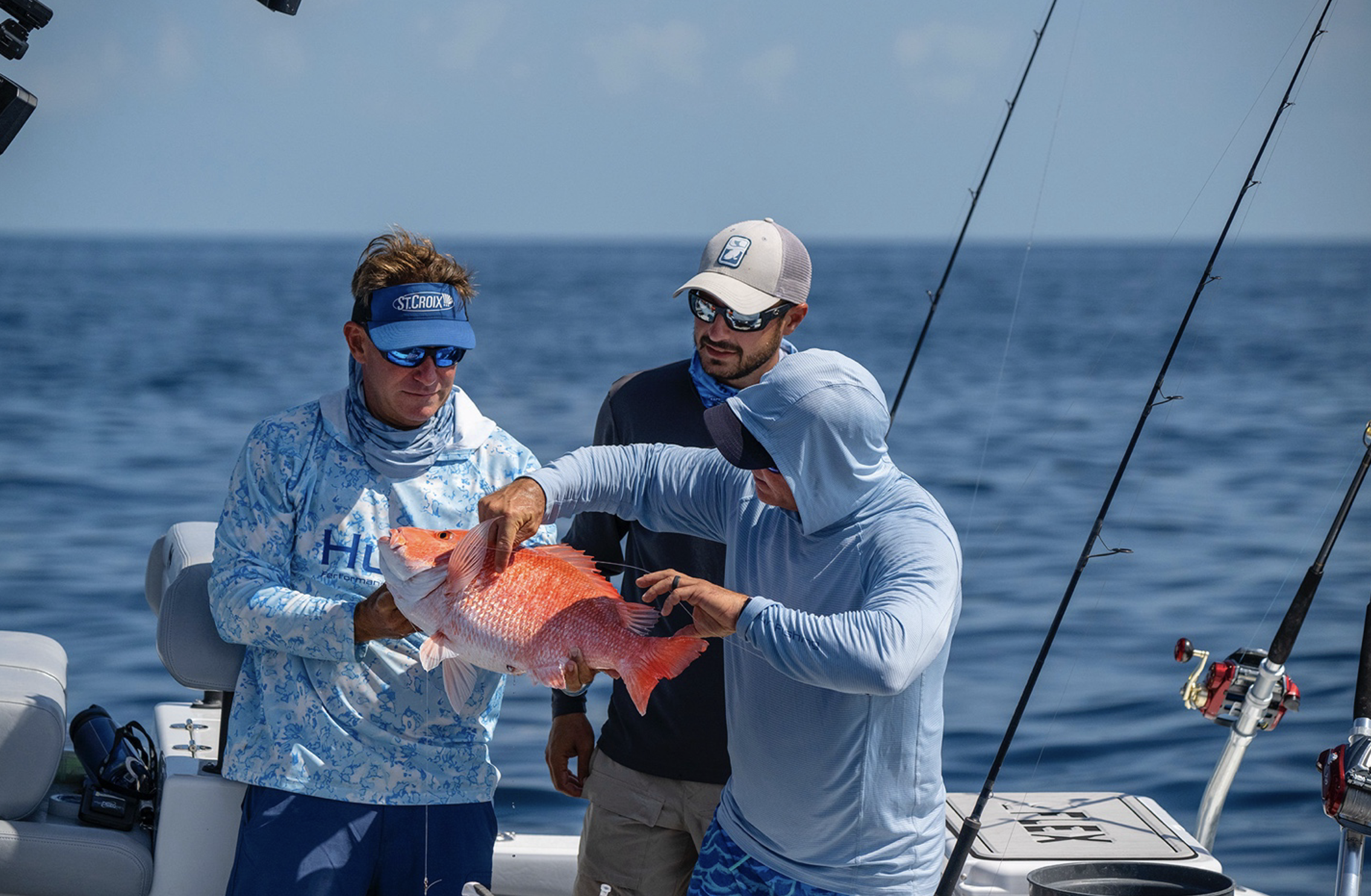Do Red Snapper Respond to Baited Traps?

A recent study reveals which fish are more likely to approach bait.
The federal government will open the recreational Red Snapper Season in federal waters for just two days this year: July 8 and 9. Despite requirements designed to increase post-release survival, the season is just as short as ever. Scientists continue to gather data on the species to inform decisions and improve population management.
Research Need
Many long-term surveys of reef fish use catch data from baited gears or video counts from underwater cameras. Different fish, however, behave differently around bait. This influences the fish catching process and could make population estimates less accurate.
What did they study?
A research team — which included scientists from NC State University’s Center for Marine Sciences and Technology — wanted to measure the movement of red snapper around baited gear.
The study area was a natural reef site in the open ocean off North Carolina. First, the team caught and tagged fish with electronic transmitters that broadcast a series of sound pulses; scientists then could record the location, direction, and depth of each tagged fish.
The research team distinguished red snapper approaching bait by accident from those approaching based on sense of smell or other sensory cues by examining the movements of the tagged fish on days immediately before sampling with baited traps. Researchers also tracked tagged fish and compared that data to fish the team observed on each bait trap’s video camera.
What did they find?
Red snapper responded to bait in some cases but not others. Of the 26 surviving tagged fish, 15 approached bait at least once. Most (73%) of these fish approached multiple baited traps throughout the study.
Generally, closer and down-current fish were more likely to approach baited traps than fish farther away and up-current. Some red snapper approached bait due to apparent sensory cues (28%), but most approached incidentally (72%).
Video recordings and tagging produced different information. Tagging indicated 25 of the 109 bait traps had at least one red snapper approach. When scientists viewed the videos, however, red snapper were present in only 18 of the 25 videos recording the fish at those individual bait traps.
Anything else?
Some studies have shown red snapper don’t move around much, while other research indicates some might cover long distances.
In this study, tagged red snapper approached bait from initial distances as near as 1 foot to over 3,700 feet away. The estimated effective fishing area (in which at least half the red snapper responded to bait) was over 24,649 square feet — over half an acre — a finding that could inform estimates about red snapper populations when combined with video counts and other information.
In fact, this study suggests that relying only on video counts might not be as accurate as using both tagging and video.
Reading
Bacheler, N.M., Runde, B.J., Shertzer, K.W., Buckel, J.A., and Rudershausen, P.J. 2022. Fine-scale behavior of red snapper (Lutjanus campechanus) around bait: approach distances, bait plume dynamics, and effective fishing area. Canadian Journal of Fisheries and Aquatic Sciences. 79: 458–471.
Funding was provided by the National Marine Fisheries Service.
By Sara Mirabilio.
Lead photo: red snapper, courtesy of Jeff Miller/CC-BY-2.0.
The text from Hook, Line & Science is available to reprint and republish at no cost, but only in its entirety and with this attribution: Hook, Line & Science, courtesy of Scott Baker and Sara Mirabilio, North Carolina Sea Grant.
- Categories:



